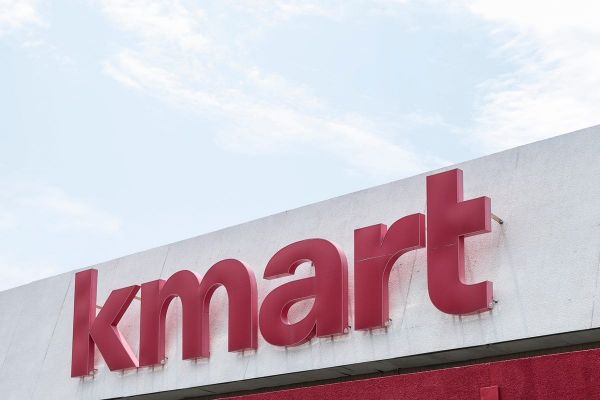The future of Kmart, once a prominent retail giant, hangs in the balance as the iconic brand grapples with financial instability and store closures. In recent years, Kmart has faced numerous challenges, including declining sales, changes in consumer shopping habits, and intense competition from retail giants like Walmart and Target. The closure of the Kmart in Avenel, New Jersey, further underscores the company’s struggle to stay afloat.
Page Contents
- 0.1 The future of Kmart, once a prominent retail giant, hangs in the balance as the iconic brand grapples with financial instability and store closures. In recent years, Kmart has faced numerous challenges, including declining sales, changes in consumer shopping habits, and intense competition from retail giants like Walmart and Target. The closure of the Kmart in Avenel, New Jersey, further underscores the company’s struggle to stay afloat.
- 0.2 Key Takeaways:
- 1 The History of Kmart
- 2 Current Store Closures
- 3 Factors Contributing to Kmart’s Decline
- 4 Financial Stability and Future Prospects
- 5 Impact on Employees and Communities
- 6 Kmart’s Cultural Significance
- 7 Kmart’s Legacy
- 8 The Future of Kmart
- 9 The Impact of Kmart’s Closures on the Retail Industry
Despite efforts to revitalize the brand, Kmart’s decline has been steady. The chain filed for Chapter 11 bankruptcy protection in 2002 and closed more than 250 stores as a result. Now, with only three Kmart stores remaining in the U.S., questions loom over the future prospects of the once beloved department store.
Key Takeaways:
- Kmart has faced years of financial instability and declining sales.
- The closure of the Kmart in Avenel, New Jersey, leaves only three remaining stores in the U.S.
- Competition from Walmart and Target has significantly impacted Kmart’s market share.
- Kmart’s bankruptcy in 2002 further weakened the company’s position in the retail industry.
- The future prospects of Kmart and the remaining stores are uncertain, as no clear plans for revitalization have been announced.
The History of Kmart
Kmart, formerly known as S. S. Kresge Corporation, has a rich history that dates back to its founding in 1899. Originally a variety store chain, it later underwent a transformation in 1977 to become Kmart Corporation, one of the largest retailers in the United States.
In 1899, S. S. Kresge opened his first Kresge store in downtown Detroit. The store initially carried a variety of products, including clothing, housewares, and seasonal items. Kresge’s concept of providing quality goods at affordable prices quickly gained popularity.
Throughout the 20th century, Kresge Corporation continued to expand its footprint, opening stores across the country. By 1962, Kmart had opened its first discount department store, offering a wide range of merchandise at lower prices than traditional retailers.
In 1977, the company officially changed its name to Kmart Corporation, marking a new era for the brand. With its expanded range of products and competitive pricing, Kmart became a popular destination for shoppers nationwide.
However, Kmart faced financial difficulties in the early 2000s, ultimately leading to its filing for bankruptcy in 2002. Despite efforts to restructure and regain its financial stability, the company struggled to compete with emerging retail giants like Walmart and Target.
In an attempt to revive both brands, Kmart and Sears merged in 2005 to form Sears Holdings Corporation. This partnership aimed to leverage the strengths of both companies to strengthen their market position. However, Kmart’s decline persisted, and its store closures continued.
Today, Kmart’s history serves as a reminder of the challenges faced by traditional brick-and-mortar retailers in an increasingly competitive retail landscape.
Current Store Closures
The Kmart in Avenel, New Jersey will be closing its doors for good on April 16, 2023. This closure will leave only three remaining Kmarts in the U.S. The other two stores are located in Westwood, New Jersey and Bridgehampton, New York. The closure of the Avenel location has been met with resignation rather than support, as online shopping and changing consumer behavior have impacted the retail industry.
As the retail landscape continues to evolve, Kmart has been facing challenges in keeping up with the changing demands and preferences of consumers. The closure of the Kmart store in Avenel, New Jersey is just one example of the store closures that have been occurring across the country. Many brick-and-mortar retailers, including Kmart, have struggled to compete with the convenience and accessibility of online shopping.
The closure of the Avenel location is significant for Kmart, as it reduces the number of Kmart stores in the U.S. to just three. With the closure, the other remaining Kmarts in Westwood, New Jersey and Bridgehampton, New York will be the last standing stores of the once-thriving retail chain.
Various factors have contributed to the decline of Kmart, including increased competition from other retail giants such as Walmart and Target. These larger competitors have been able to offer a wider range of products and more competitive pricing, attracting consumers away from Kmart. Additionally, the shift towards online shopping has drastically changed the retail landscape, and Kmart has struggled to adapt to this new paradigm.
The Impact of Online Shopping
Online shopping has revolutionized the way consumers shop, offering convenience, competitive pricing, and a vast selection of products. Kmart, like many other traditional retailers, has faced challenges in competing with the advantages of online shopping. The closure of the Avenel store is a clear indication of the impact that online shopping has had on the retail industry as a whole. Consumers now have the ability to browse and purchase products from the comfort of their own homes, making the appeal of physical stores less compelling.
Changing Consumer Behavior
The closure of the Avenel Kmart store also highlights the changing behavior of consumers. With the rise of e-commerce, consumers have become accustomed to the ease and efficiency of online shopping, as well as the ability to access a wide range of products and compare prices with just a few clicks. This shift in consumer behavior has had a significant impact on brick-and-mortar retailers, as they struggle to attract and retain customers in a saturated and increasingly digital market.
As Kmart continues to face these challenges, the closure of the Avenel store serves as a reminder of the changing retail landscape and the need for retailers to adapt and innovate in order to survive.
Factors Contributing to Kmart’s Decline
Kmart’s decline can be attributed to a combination of factors that have significantly impacted its position in the retail industry. The rise of fierce competitors like Walmart and Target has presented tough challenges for Kmart. These retail giants offer lower prices, a wider range of trendy products, and a stronger online presence, attracting shoppers away from Kmart’s stores.
Additionally, the shift in consumer behavior towards online shopping has had a profound impact on Kmart’s traditional brick-and-mortar model. As more consumers opt for the convenience of online shopping, foot traffic in physical stores has declined, including at Kmart. This shift has made it harder for Kmart to stay competitive and maintain its customer base.
Furthermore, Kmart’s bankruptcy in 2002 dealt a significant blow to the company’s stability and reputation. The bankruptcy filing led to store closures and financial struggles, further weakening Kmart’s position in the market. Although efforts were made to revive the brand, the impact of the bankruptcy has played a crucial role in Kmart’s ongoing decline.
“The rise of competition from Walmart and Target, along with the shift in consumer behavior towards online shopping, has created a challenging environment for Kmart.”
These multiple factors have exerted immense pressure on Kmart, creating a perfect storm that has contributed to its decline over the years. While Kmart continues to operate, its struggles to keep up with evolving consumer demands and intense competition have greatly affected its market position and financial stability.
Financial Stability and Future Prospects
Kmart’s financial stability has been a growing concern for several years. With a declining number of stores and lack of updates from its parent company, Transformco, the future prospects for Kmart appear uncertain.
Transformco has not provided any clear plans or strategies for revitalizing the remaining Kmart stores, leaving many questioning the company’s commitment to its long-term success. Without a cohesive and forward-thinking strategy, Kmart’s ability to navigate the challenges of the retail industry is called into question.
The closure of multiple stores further reinforces the ongoing challenges faced by Kmart. With only a limited number of locations still in operation, the company must confront the realities of a changing market and adapt to new consumer behaviors and expectations.
The Need for a Clear Path Forward
It is crucial for Kmart and Transformco to outline a clear path forward that addresses the financial instability and positions the brand for future success. Without a well-defined plan, the company may continue to struggle and potentially face further store closures.
“In order for Kmart to regain its financial stability and secure its future prospects, Transformco must actively invest in the brand, adapt to changing consumer preferences, and strategically position itself in the retail landscape.”
By demonstrating a commitment to innovation, customer experience, and competitive pricing, Kmart can rebuild its reputation and attract a new generation of shoppers. Transformco has a responsibility to communicate its vision for the brand and provide the necessary resources to achieve its goals.
Charting a New Course for Success
To ensure the future viability of Kmart, the company must consider various strategies, including:
- Exploring partnerships with popular online platforms to expand its reach and stay competitive in the e-commerce space
- Updating store formats and investing in modernizing the overall shopping experience
- Implementing targeted marketing campaigns to reposition the brand and attract new customers
By taking proactive steps towards transformation and revitalization, Kmart can regain financial stability and enhance its future prospects in the retail industry.
Transformco needs to provide a clear vision and a solid plan of action for Kmart’s future. Without a strategic direction, the company may struggle to remain relevant in an increasingly competitive market.
Impact on Employees and Communities
The closure of Kmart stores has had a significant impact on both employees and the communities in which these stores were located. As each Kmart shuts down, employees are faced with the loss of their jobs, which can lead to financial instability and uncertainty. The closure of these stores also results in vacant Kmarts, leaving behind empty storefronts that pose a challenge for communities to fill.
Former Kmart locations have been repurposed to mitigate the impact of these closures. In some cases, vacant Kmarts have been transformed into fitness centers, providing a new destination for community members seeking exercise opportunities. Others have been converted into self-storage facilities, meeting the demand for additional storage space in the area. Some buildings have even been repurposed as churches, becoming centers of gathering and worship for the community.
“The closure of Kmart stores has not only affected employees but also the communities that relied on these stores for various needs. The impacts range from job losses to the challenge of finding new uses for these vacant properties.”
The closure of Kmart stores has undoubtedly caused a ripple effect in terms of employment and community vitality. The loss of jobs impacts not only the individuals employed by Kmart but also their families and the local economy. Additionally, the vacancy left by these stores creates a visual reminder of economic challenges and disinvestment.
Despite the challenges presented by the closures, communities have shown resilience and adaptability in repurposing these vacant Kmarts. By finding new uses for these spaces, they have been able to breathe new life into what was once a symbol of retail presence. However, it is important to acknowledge that the impact on employees and communities from the closure of Kmart stores is not easily overcome, and the long-term effects may continue to be felt for years to come.
Kmart’s Cultural Significance
Kmart holds a significant place in American culture. As a once-popular destination for shoppers, Kmart played a notable role in shaping the retail landscape and its impact on American society cannot be understated. With its diverse range of products, Kmart became synonymous with affordable shopping for many Americans across the country.
One of the most iconic aspects of Kmart’s cultural significance was its Blue Light Special. This unique sale promotion, announced with a flashing blue light, became a cultural reference and a defining feature of the company’s identity. The Blue Light Special not only captivated shoppers but also found its way into movies, songs, and even sponsored events.
With its presence in American society, Kmart became more than just a retail chain. It became a symbol of accessibility, convenience, and affordability. The Blue Light Special, in particular, became a playful and exciting experience that shoppers looked forward to during their visits to Kmart.
These cultural references and Kmart’s influence in popular culture further solidified its place in American society. The brand was not only known for its products but also for the experiences it provided to its customers.
Overall, Kmart’s cultural significance lies not only in its prominence as a retail giant but also in its ability to embed itself in American culture through memorable experiences like the Blue Light Special.
Quotes:
“Kmart was more than just a store; it was a cultural institution where families could find everything they needed at an affordable price.”
“The Blue Light Special was like a beacon of excitement, drawing in shoppers and creating a unique experience that set Kmart apart from its competitors.”
Key Points:
- Kmart holds a significant place in American culture.
- Kmart’s Blue Light Special became a cultural reference and part of the company’s identity.
- Kmart was mentioned in movies, songs, and sponsored events.
- Kmart became a symbol of accessibility, convenience, and affordability.
- Kmart’s cultural significance lies in its ability to embed itself in American culture through memorable experiences.
| Key Aspect | Impact |
|---|---|
| Cultural Reference | The Blue Light Special became a recognizable symbol of Kmart’s cultural significance in American society. |
| Popularity in Entertainment | Kmart was referenced in movies, songs, and sponsored events, further solidifying its presence in American culture. |
| Distinctive Shopping Experience | The Blue Light Special created a unique and exciting shopping experience that set Kmart apart from its competitors. |
Kmart’s Legacy
Despite its decline, Kmart has left a lasting legacy in the retail industry, shaping the course of retail history with its innovative offerings and cultural impact. From pioneering layaway programs to popularizing the iconic Blue Light Special, Kmart has made a significant mark on American society and consumer culture.
The introduction of layaway programs revolutionized the way consumers could afford and purchase goods. Kmart’s layaway allowed customers to reserve coveted items and pay for them over time, making high-ticket products more accessible to a wider audience. This approach provided financial flexibility and helped solidify Kmart as a go-to destination for budget-conscious shoppers.
Kmart’s Blue Light Special became emblematic of the brand’s identity. Announced with a flashing blue light, this spontaneous sale promotion created a sense of excitement and urgency among shoppers. The Blue Light Special became a cultural reference, widespread in movies, songs, and pop culture, further cementing Kmart’s presence in American society.
“Attention Kmart shoppers! Get ready for a Blue Light Special in aisle 10!”
Beyond its contributions to retail practices, Kmart made a lasting impact on communities across the country. The closure of Kmart stores has left empty storefronts, leaving communities grappling with the challenge of revitalizing these spaces. Former Kmart locations have been repurposed for various purposes, ranging from fitness centers to self-storage facilities and even churches. The transformation of these spaces reflects the adaptability and reimagining required in the face of changing retail landscapes.
Kmart’s legacy continues to be remembered by generations who experienced its influence firsthand. From its innovative approaches to affordability and customer engagement to its distinct cultural presence, Kmart’s impact on retail history remains undeniable, even amidst the challenges the company currently faces.
The Future of Kmart
The future of Kmart remains uncertain as the company has not provided any clear plans or strategies for revitalization. Transformco, the owner of Kmart and Sears, has not publicly commented on any future plans for the brand. It is unclear if Kmart will undergo a transformation or if the focus will shift to online operations. The limited number of remaining stores raises questions about the viability of the brand in the current retail landscape.
The Need for Transformation
Kmart, once a prominent player in the retail industry, has struggled to adapt to changing consumer preferences and increased competition. In order to remain relevant and regain its footing, Kmart needs to explore innovative strategies and transform its store format.
One possible avenue for Kmart’s future is to modernize its store format, creating a more engaging and immersive shopping experience. By investing in redesigns and incorporating technology, Kmart could attract new customers and enhance the overall shopping journey. This transformation could include interactive displays, personalized recommendations, and seamless integration of online and in-store shopping.
Embracing E-commerce
Another potential direction for Kmart is to further embrace e-commerce. With the rapid growth of online shopping, Kmart could leverage its existing brand recognition and customer base to expand its online presence. By enhancing its website and developing a robust online marketplace, Kmart can reach a wider audience and compete with industry giants like Amazon.
Partnerships and Collaborations
Kmart could also explore partnerships and collaborations to revitalize its brand. By teaming up with popular brands or influencers, Kmart can tap into new markets and attract younger consumers. Collaborations could include exclusive product lines, limited edition collections, or joint marketing campaigns to generate excitement and buzz around the brand.
The Road Ahead
While the future of Kmart may be uncertain, the company has the opportunity to reinvent itself and regain its position in the retail industry. By prioritizing transformation, embracing e-commerce, and exploring strategic partnerships, Kmart can forge a new path forward. Only time will tell what lies ahead for this iconic retail brand.
The Impact of Kmart’s Closures on the Retail Industry
The closure of Kmart stores has reverberated throughout the retail industry, highlighting the challenges faced by traditional brick-and-mortar retailers in today’s changing retail landscape. With the rise of e-commerce and the shift in consumer behavior towards online shopping, physical stores have faced increasing competition and struggled to adapt to evolving consumer preferences.
Kmart’s closures are a stark reminder of the ongoing transformation of the retail industry. As consumers increasingly turn to online platforms for their shopping needs, brick-and-mortar retailers are forced to reevaluate their strategies and find innovative ways to attract customers. The closure of Kmart stores serves as a wake-up call for retailers across the board, emphasizing the need to embrace and capitalize on digital technologies.
The impact of Kmart’s closures extends beyond its own stores. It sends a signal to the entire retail industry that the traditional model of retail is no longer sufficient. To thrive in today’s changing landscape, retailers must invest in online platforms, optimize their digital presence, and provide seamless omni-channel experiences for their customers. Those who fail to adapt risk being left behind in an increasingly competitive market.
Also Read, Pam Tork, Brenda Vaccaro, and Axton Joseph.





